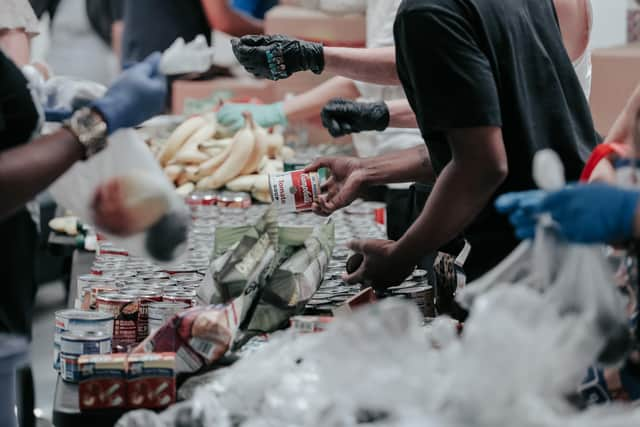Food bank plans for Christmas - how to help, what to give, where to leave donations
and live on Freeview channel 276
As a result of the current cost of living crisis, demand for donations has significantly increased due to the number of families and individuals needing food packages, so the more people can offer to those less fortunate is greatly appreciated.
Christmas is a time for giving, so fully embrace the festive spirit this year and donate what you can to your local food banks.
Advertisement
Hide AdAdvertisement
Hide AdHere is a list of tips and food banks throughout Northern Ireland to help you give what you can.


How to help
For an increasing number of households, food banks are their only way of receiving food and ensuring they don’t go hungry, making them and the organisations running them a crucial part of every community.
If every person was to buy one singular extra item with their weekly shop and then donate it to a nearby charity there would be no families at risk of going hungry.
Whether you can donate a trolley-full or an item off the shelf, all donations are welcomed and will be put to good use.
Advertisement
Hide AdAdvertisement
Hide AdIf, for any reason, giving physical items is unachievable but you still want to help ensure everyone in your local area has food on their table, donations can be made in the form of online payments, available for any amount.
Not all donations have to be big, but all are appreciated as you’re helping those less fortunate than yourself.
For more information on how to help, go to trusselltrust.org
What to give
The vast majority of distributed food parcels include only public-donated pieces, with every donated item being used and consumed by food bank users.
Advertisement
Hide AdAdvertisement
Hide AdFood parcels can consist of anything from cans and long-lasting items to fresh products such as meat and vegetables.
Not all donations have to be edible, with the likes of toiletries and hygiene products also being accepted and included in the essential items that are distributed.
The Trussell Trust recommends that donations are primarily products with a long shelf life, as this ensures there is zero food waste. Items such as tinned soup, pasta, rice, biscuits and canned fruit are among the most popular donations.
For more information on what items to donate, go to trusselltrust.org/get-help/food
Where to leave donations
Advertisement
Hide AdAdvertisement
Hide AdWhether you’re in a rural town or a big city, there are plenty of drop-off points across the country to choose from.
Whilst food banks are the main location for collecting food parcels, donations do not necessarily need to be dropped off at one.
In many supermarkets across the country, there are donation points that will advertise which charity they are collecting for and encourage shoppers to donate items from throughout the store.
Supermarket donation points are perfect for convenience, allowing people to pick up an additional item when carrying out their own shopping and drop it off all in one place.
Advertisement
Hide AdAdvertisement
Hide AdThere are fewer food banks around than supermarkets, but if there is one local to you then it’s best to check their donation times and see when they accept donations if you’d rather give it directly to your local charity.
For monetary donations, you can give cash to a food bank in person or make a payment online.
For more information on where your local food bank is, go to trusselltrust.org/find-a-foodbank